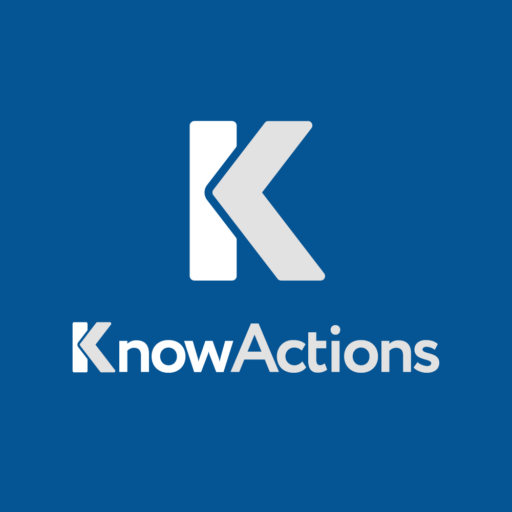Did you know that a staggering 90% of effective meetings hinge on well-executed action items1? This statistic highlights the pivotal role of meeting action tracking in organizational success. In today’s fast-paced business landscape, task management and productivity tools are crucial for teams aiming to excel.
Meeting action tracking is vital for productive meetings, ensuring that discussions lead to concrete outcomes. With 85% of professionals acknowledging the significance of documenting meeting action items, it’s evident that this method is vital, not optional1.
In the UK, organizations are increasingly adopting advanced task management systems to enhance their workflows and team accountability. These tools not only facilitate task assignment and tracking but also offer deep insights into project progress and team performance.
The influence of well-managed action items goes beyond just completing tasks. They establish a clear sequence of tasks and deadlines for teams, with 70% of professionals noting their effectiveness in this area1. This structured approach to meeting follow-ups ensures that every team member is aware of their responsibilities and deadlines, promoting a culture of accountability and efficiency.
As we delve deeper into the realm of meeting action tracking, we will examine the tools and techniques that can revolutionize your team’s productivity. From digital platforms that seamlessly integrate with current workflows to best practices for crafting actionable tasks, this guide will provide you with the insights to enhance your meeting outcomes and drive organizational success.
Key Takeaways
- 90% of effective meetings rely on well-executed action items
- Documenting action items is crucial for 85% of professionals
- 70% find action items effective for creating clear task sequences
- Task management tools are essential for modern team productivity
- Well-managed action items foster accountability and efficiency
- Integrating action tracking with existing workflows boosts effectiveness
Understanding Meeting Action Items
Meeting action items are vital for advancing progress and ensuring accountability within any organization. They are the foundation of productive meetings, turning discussions into concrete results. Let’s explore the essential elements of action items and their role in boosting meeting efficiency.
Definition of Action Items
Action items are specific tasks or activities assigned during meetings with a deadline2. They act as a formal record of decisions and actions made during a meeting, serving as a reliable reference over time3. Well-defined action items are crucial for successful projects and team coordination.
Importance in Meeting Productivity
Clear action items ensure tasks are assigned, tracked, and finished, boosting progress and accountability2. They serve as a gauge to monitor progress in regular meetings and justify past decisions by highlighting key considerations3. Effective action item tracking is vital for enhancing team productivity and meeting organizational goals.
Components of Effective Action Items
To be effective, action items must be specific, assignable, measurable, and time-bound2. Essential components include:
- Basic information
- Agenda items
- Decisions made
- Action items
- Next steps
- Attachments
Assigning responsibility and deadlines for action items in meeting minutes is crucial3. This clarity enhances team coordination and ensures everyone knows their role.
| Component | Description | Importance |
|---|---|---|
| Specificity | Clear, detailed task description | Ensures understanding and prevents confusion |
| Assignability | Designated person responsible | Establishes accountability |
| Measurability | Quantifiable outcomes | Allows for progress tracking |
| Time-bound | Set deadline for completion | Drives timely execution |
By incorporating these elements, teams can significantly enhance their meeting minutes, action item tracking, and overall coordination. Regular check-ins and technology use can further improve action item monitoring and tracking, ensuring project success.
The Role of Action Items in Organizational Success
Action items are crucial for organizational success. They lay out tasks and deadlines clearly, ensuring everyone knows what’s expected. By breaking projects into smaller tasks, action items boost productivity and keep the team moving forward4.
Managing action items effectively promotes team accountability and prevents social loafing. Companies that value accountability tend to perform better, being 2.5 times more likely to excel5. This highlights the significance of working together and holding each other accountable in achieving success.
Workflow Automation is key to efficiently handling action items. Tools like Google Spreadsheets or Excel help track these items, with columns for who’s responsible, when it’s due, and what the task is about6. This method aligns with the GTD (Getting Things Done) approach, which includes five steps: Capture, Clarify, Organize, Reflect, and Engage6.
Well-managed action items significantly impact team performance. Teams that work well together tend to perform better, being five times more likely to be top-notch5. Regular updates and communication from action items lead to better team communication and solving problems more efficiently4.
| Action Item Attribute | Impact on Organizational Success |
|---|---|
| Clear Description | Eliminates guesswork, improves task execution |
| Assigned Owner | Increases accountability, reduces task ambiguity |
| Specific Due Date | Enhances time management, aids prioritization |
| Regular Status Updates | Facilitates progress tracking, enables timely interventions |
By using a strong action item tracking system, organizations can build a culture of accountability. This approach improves Project Collaboration and streamlines Workflow Automation. It not only increases productivity but also offers insights for ongoing improvement and growth.
Creating Clear and Actionable Meeting Tasks
In today’s workplace, 60% of knowledge workers spend their time on activities like meetings, status checks, and searching for information7. To boost productivity, it’s crucial to optimize these processes. Effective task management begins with creating clear and actionable meeting tasks.
Writing Specific and Measurable Tasks
When crafting action items, specificity is key. Tasks should start with verbs to clearly describe the required actions7. For instance, “Research customer feedback” is more actionable than “Look into customer issues.” Meeting action tracking becomes easier when tasks are well-defined.
Assigning Responsibility and Deadlines
Clear task ownership is vital for successful completion. Assigning each task to a team member ensures accountability and clarity on responsibilities8. Setting realistic deadlines is equally important. Without specific due dates, tasks risk being overlooked or delayed7.
Ensuring Task Clarity and Understanding
To guarantee task clarity, include a description field that adds context8. This helps team members understand the task’s purpose and requirements. Productivity tools like Asana or Anchor AI can streamline the process of creating, assigning, and tracking action items within a team78.
| Element | Purpose | Example |
|---|---|---|
| Action Verb | Clearly describe the action | Create, Analyze, Review |
| Specific Task | Define the exact work needed | Q1 Sales Report |
| Assignee | Establish responsibility | Marketing Manager |
| Deadline | Set completion timeframe | March 31, 2023 |
Meeting Action Tracking: Best Practices
Effective meeting action tracking is vital for an organization’s success. It ensures tasks are completed efficiently and team coordination improves. A key strategy is establishing a robust system to record and monitor action items.
![]()
Recording action items immediately after meetings is essential. This practice prevents important tasks from being forgotten or overlooked. Use clear, concise language when documenting tasks to avoid misunderstandings. Include vital information such as task descriptions, deadlines, and assigned team members9.
Utilizing software solutions centralizes the meeting workflow and organizes action items effectively. Over 500 meeting agenda templates are available through platforms like Fellow, ensuring meetings start with clarity and participation10. These tools often provide workplace analytics to understand meeting productivity patterns, including collaboration trends and time spent in meetings.
Prioritizing tasks is another crucial aspect of action item tracking. Consider using a table to categorize tasks by urgency and importance:
| Urgency | Importance | Action |
|---|---|---|
| High | High | Do immediately |
| High | Low | Delegate if possible |
| Low | High | Schedule for later |
| Low | Low | Eliminate or postpone |
Regular follow-ups are vital for successful action item tracking. Schedule check-ins to monitor progress and address any obstacles. This practice promotes accountability and ensures tasks stay on track. Encouraging open communication about changing priorities or challenges helps maintain team coordination and meeting productivity11.
By implementing these best practices, organizations can significantly improve their meeting action tracking, leading to better team coordination and overall efficiency in achieving goals.
Tools for Effective Action Item Management
Efficient management of action items is key to project success. Modern tools provide robust solutions for tracking and organizing tasks. Let’s delve into some effective options that enhance productivity and streamline workflows.
Digital Task Management Platforms
Project management software is the leading choice for creating and managing action items11. These platforms enable real-time tracking, facilitating effective workload management and project execution11. By breaking down complex tasks into smaller, actionable items, teams can significantly boost productivity12.
Collaborative Software Solutions
Tools like Trello, Jira, and Asana have transformed action item management12. These tools make assigning task owners and speeding up project communication effortless11. Given that 60% of knowledge workers spend time on meetings and status updates, these solutions streamline tracking decisions and next steps7.
Integration with Existing Workflow Systems
Integrating action item management tools with current workflows enhances Project Collaboration. This integration ensures seamless task assignment, tracking, and synchronization across various systems. Effective project managers use these integrated systems to distribute action item lists post-meeting, ensuring team alignment on next steps7.
| Feature | Benefit |
|---|---|
| Real-time tracking | Improved workload management |
| Task owner assignment | Enhanced project communication |
| Priority levels | Better task focus |
| Due date setting | Timely task completion |
By utilizing these tools and strategies, teams can overcome common challenges in action item management. This approach leads to increased productivity, improved engagement, and superior project outcomes12.
Implementing a Robust Action Item Tracking System
Creating a solid action item tracking system is vital for managing meetings and finishing tasks efficiently. Action items help keep track of progress and set priorities13. By putting all action items in one place, everyone knows what needs to be done, and nothing gets missed14.
To build a strong system, first pick the right tools for tracking actions. Options range from basic spreadsheets to advanced software. The goal is to find a platform that fits well with your current workflow.
![]()
It’s crucial to have clear steps for recording and updating tasks. Using templates for action items makes tracking consistent and clear, which boosts teamwork and efficiency14. This method ensures tasks are clear, specific, and assigned to the right people13.
Sorting tasks by urgency and importance is key for managing tasks well. Setting clear priorities for action items helps figure out what needs to be done quickly and sets realistic deadlines for meeting tasks13. This approach helps manage time and resources well14.
Keeping the team on track with regular updates and checks on progress boosts accountability. Staying on top of action items helps spot and solve problems early13. Keeping everyone informed about changes and challenges keeps the team aligned14.
“Clear action items increase the likelihood of follow-through on tasks.” – Sheryl Sandberg, Technology Executive
About half of tasks on to-do lists don’t get done, and 44% of projects stall or don’t finish because of poor communication15. A strong action item tracking system can greatly improve these numbers, leading to better meetings and successful projects.
| Component | Purpose | Impact |
|---|---|---|
| Centralized System | Document all action items | Provides clarity and prevents oversights |
| Templates | Enhance consistency | Improves collaboration and workflow efficiency |
| Prioritization | Manage task urgency | Optimizes resource allocation |
| Regular Follow-ups | Track progress | Identifies and mitigates potential roadblocks |
Enhancing Team Accountability Through Action Tracking
Team accountability is vital for successful project collaboration. Effective action tracking boosts productivity and encourages a culture of responsibility.
Setting Clear Expectations
Clear expectations are key for team coordination. When team members own their tasks and deadlines, projects finish quicker and goals are met more effectively16. The 5Cs framework – Common purpose, Clear expectations, Communication and alignment, Coaching and collaboration, and Consequences and results – is crucial for building high-performing teams16.
Regular Follow-ups and Progress Checks
Regular follow-ups keep projects moving forward. They encourage proactive problem-solving, helping teams spot and fix issues early16. This method saves time and resources, while promoting ongoing improvement16.
Celebrating Task Completion and Team Achievements
Recognizing achievements motivates the team. When team members feel valued, they become more involved and focused, turning projects into personal goals16. This pride leads to better quality work and less rework16.
Effective action tracking boosts team accountability, leading to many benefits:
| Benefit | Impact |
|---|---|
| Productivity | 18% increase in sales17 |
| Customer Loyalty | 10% improvement17 |
| Safety Incidents | 63% reduction17 |
| Quality | 32% enhancement in defect reduction17 |
By using productivity tools and promoting accountability, teams can drive innovation, enhance problem-solving, and increase organizational profitability by 23%17.
Overcoming Common Challenges in Action Item Management
Effective action item management is key to successful meetings and streamlining workflow. However, many teams encounter significant hurdles. A major challenge is the ambiguity surrounding tasks, responsibilities, and deadlines, leading to confusion and missed deadlines18. To overcome this, teams must ensure action items are clear, measurable, and well-defined during meeting minutes.
Another significant issue is the lack of accountability, which can cause delays and subpar work quality18. A strong task management system can monitor progress and ensure team members fulfill their duties. Moreover, technical problems in virtual meetings often disrupt communication and hinder progress19.
Ensuring action items align with organizational goals is also crucial. Misaligned tasks can be irrelevant or even conflicting18. Teams should regularly evaluate and adjust action items to align with overarching objectives. Lastly, neglecting to follow up on completed tasks can hinder learning and improvement18. Establishing a system for reviewing outcomes and celebrating successes can foster a culture of continuous improvement in meeting minutes and task management.




